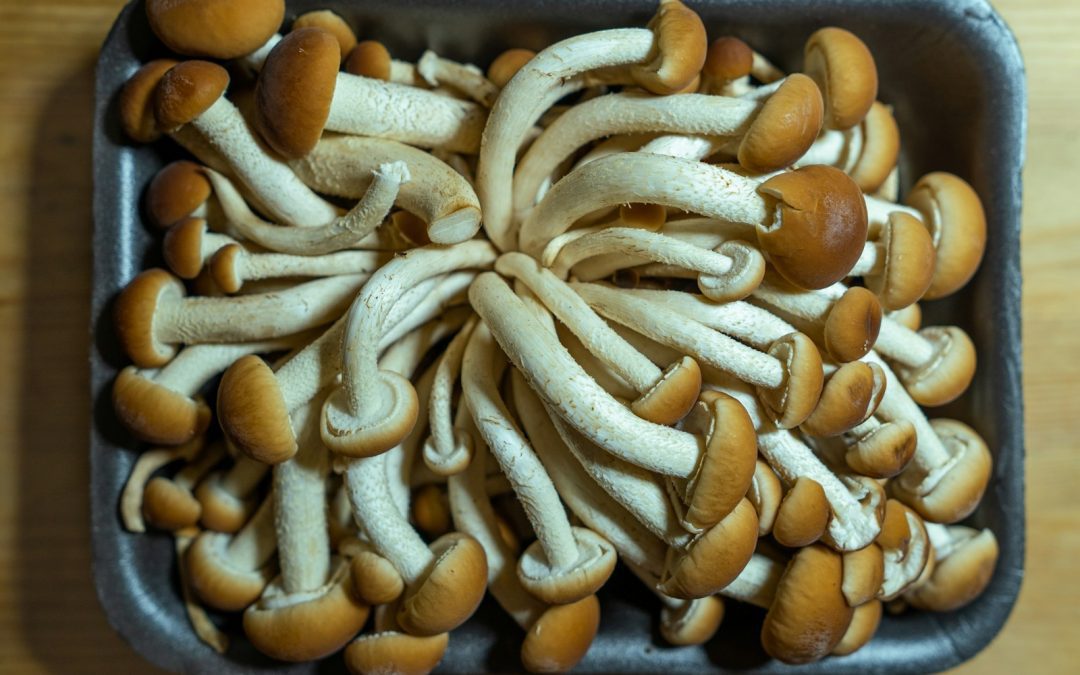Mushroom cultivation is an exciting and rewarding endeavor that can be done right from the comfort of your home. Whether you’re living in an urban apartment or a house with a backyard, growing edible mushrooms is an eco-friendly way to add fresh ingredients to your kitchen. In this guide, we’ll walk you through the steps of growing mushrooms at home, the varieties you can choose from, and tips to ensure a successful harvest.
Contents
Why Grow Mushrooms at Home?
Growing your own mushrooms offers several benefits:
- Freshness: Homegrown mushrooms are fresher and often more flavorful than store-bought options.
- Cost-Effective: While initial setup might require some investment, growing mushrooms at home can save money in the long run.
- Sustainability: Mushrooms can be grown using organic waste products like coffee grounds or straw, making it a sustainable practice.
- Health Benefits: Mushrooms are rich in vitamins, minerals, and antioxidants, providing various health benefits.
Choosing the Right Mushroom Variety
The first step in mushroom cultivation is choosing the right variety. Some of the most popular and easiest to grow edible mushrooms include:
1. Oyster Mushrooms
Oyster mushrooms are one of the easiest varieties to grow and are known for their delicate flavor and texture. They can grow on a variety of substrates, including straw, sawdust, and even coffee grounds.
2. Shiitake Mushrooms
Shiitake mushrooms are prized for their rich, umami flavor. They are typically grown on hardwood logs or sawdust blocks and can take a bit longer to cultivate compared to oyster mushrooms.
3. Button Mushrooms
Button mushrooms, including their brown variant, cremini, and their mature form, portobello, are among the most commonly consumed mushrooms. They grow well in composted manure and require slightly more specific conditions.
4. Lion’s Mane Mushrooms
Lion’s Mane is known for its unique appearance and potential cognitive benefits. It grows on hardwood sawdust and requires high humidity.
5. Enoki Mushrooms
Enoki mushrooms are slender and delicate, often used in soups and salads. They require cooler growing conditions and can be grown in jars or containers.
Setting Up Your Mushroom Growing Environment
1. Selecting a Growing Space
Mushrooms prefer dark, humid environments, making basements, closets, or unused cabinets ideal for cultivation. Ensure the area has good ventilation to prevent mold growth.
2. Temperature and Humidity Control
Most edible mushrooms thrive in temperatures between 55°F and 75°F (13°C to 24°C). Humidity should be kept high, around 80% to 90%, to encourage proper growth. A humidifier can help maintain these conditions.
3. Substrate Preparation
The substrate is the material on which mushrooms grow. Different mushrooms prefer different substrates:
- Oyster Mushrooms: Straw, sawdust, coffee grounds.
- Shiitake Mushrooms: Hardwood logs, sawdust.
- Button Mushrooms: Composted manure.
Sterilization of the substrate is crucial to prevent contamination. This can be done by pasteurizing the substrate in boiling water or steam.
4. Inoculation
Inoculation is the process of introducing mushroom spores or spawn to the substrate. Spawn is recommended for beginners as it’s more reliable than spores. After inoculating the substrate, it should be kept in a warm, dark place to allow the mycelium (the vegetative part of the fungus) to colonize the substrate.
Caring for Your Growing Mushrooms
1. Monitoring Growth
After the substrate is fully colonized by the mycelium, mushrooms will begin to fruit. This usually takes a few weeks, depending on the variety.
- Light: Most mushrooms do not require light to grow, but a small amount of indirect light can trigger fruiting.
- Airflow: Ensure there’s adequate airflow to prevent CO2 buildup, which can inhibit growth.
- Watering: Maintain high humidity by misting the growing area with water. Avoid direct watering on the mushrooms themselves, as this can lead to rot.
2. Harvesting
Mushrooms should be harvested when they reach full size but before the caps flatten or curl up. Use a sharp knife to cut the mushrooms at the base, avoiding damage to the mycelium, which can continue to produce more flushes of mushrooms.
Troubleshooting Common Issues
1. Contamination
Contamination is one of the most common issues in mushroom cultivation. It can be caused by bacteria, mold, or other fungi. To avoid this, ensure all tools and substrates are sterilized, and maintain a clean growing environment.
2. Poor Growth
If your mushrooms are not growing well, check the temperature, humidity, and airflow. Adjusting these factors can often solve the problem.
3. Pests
While not common, pests like mites or flies can occasionally affect mushroom growth. Using a fine mesh or screen over the growing area can help prevent pests.
Expanding Your Mushroom Garden
Once you’ve successfully grown your first batch of mushrooms, you may want to expand your operation. Consider trying different varieties, experimenting with different substrates, or even creating a mushroom garden outdoors if space allows.
1. Growing Mushrooms Outdoors
For those with outdoor space, consider growing mushrooms on logs or in garden beds. Outdoor mushroom cultivation can yield larger harvests and allows for the growth of more varieties.
2. Creating a Continuous Harvest
By staggering the inoculation of your substrates or using multiple growing containers, you can create a continuous harvest of mushrooms throughout the year.
3. Commercial Growing
If you find success in growing mushrooms at home, you might consider scaling up to a small commercial operation. Local markets, restaurants, and grocery stores often have a demand for fresh, locally-grown mushrooms.
Conclusion
Growing edible mushrooms at home is a rewarding and sustainable hobby that provides a fresh, healthy food source right in your own home. With the right setup, a bit of patience, and some care, you can enjoy homegrown mushrooms year-round.


